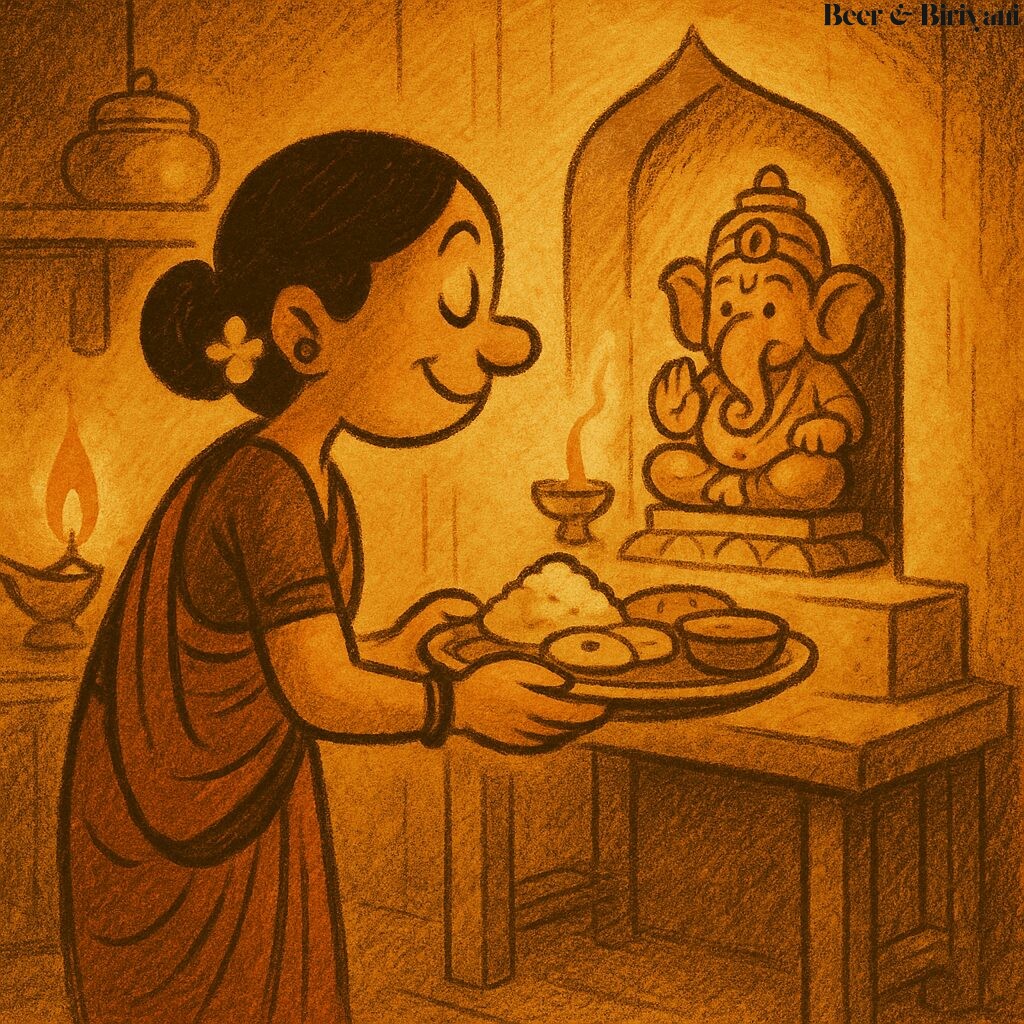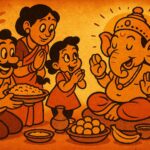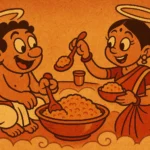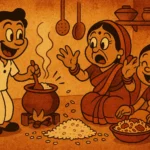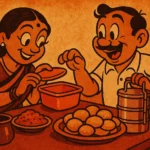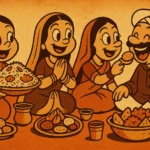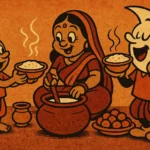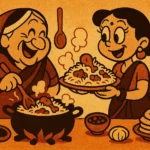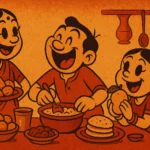The first time I made khichuri with the intention of offering it to the gods, it didn’t turn out well. The rice was overcooked, the ghee felt shy, and the whole thing looked like it needed a second chance at life. I stared at it, unsure if it was fit for divine consumption. My mother, over a video call from Mumbai, smiled and said, “Bhog isn’t about taste. It’s about feeling. Offer it with love, and He’ll eat it before you do.”
And that’s when I understood something fundamental—bhog isn’t just food. It’s mood. It’s a moment of surrender shaped in rice and halwa, a kind of edible devotion where the seasoning is as much about the heart as the spice box.
The Sacred Table
In most Indian traditions, offering food to the divine is an everyday act. You see it in tiny kitchen shrines, in large temple halls, in festival homes bustling with steam and sandalwood. The practice of naivedyam—the presentation of food before a deity—goes far beyond ritual. It’s emotional choreography. You don’t just cook. You bathe before you cook. You don’t taste the food. You don’t rush. You align your breath with your flame.
In homes like mine, growing up, bhog was quietly central to the day. A small steel plate set aside for Ganpati or Krishna before the rest of us touched the lunch. Even if it was just a pinch of rice, a spoon of dal, a piece of jaggery, it felt whole. Not because of volume, but because of intention. Food that was offered with reverence seemed to taste better. Or maybe we just ate it more slowly, more mindfully, because we believed someone else had tasted it first.
The Recipes Are the Ritual
Bhog food varies wildly depending on where you are in India. In West Bengal, the bhog at Jagannath Temple is an elaborate offering of 56 items called the chappan bhog, ranging from rice and dal to sweets and fried fritters. In Tamil Nadu, the morning pongal served in temples is spiced with black pepper and ginger, soft yet deeply satisfying. In Maharashtra, we grew up offering sabudana khichdi, sweetened sheera, and bananas.
The common thread? Simplicity. Bhog isn’t about indulgence. It avoids garlic and onion. It uses sendha namak instead of regular salt. It’s made without shortcuts, but also without showing off. Because it isn’t food for guests—it’s food for the divine. The one who knows your kitchen better than you do.
Offer First, Taste Later
One of the most telling parts of bhog is the discipline around it. You don’t taste the food before offering it. You cook by instinct, memory, muscle. You offer before you consume. And that’s a quietly radical idea in a world obsessed with previewing everything—sniffing wine, tasting soup, clicking selfies before we eat.
Bhog reverses that logic. It says: make it with your best effort, then let go. Let the deity have the first spoon. Let the offering be complete in the gesture, not just the flavor. It’s an exercise in humility. In restraint. And, ironically, in deep abundance.
Prasadam: The Return Gift
Of course, the food doesn’t go to waste. Once offered, it becomes prasadam—the blessed return. The same halwa that felt ordinary five minutes ago now carries weight. Meaning. A trace of something larger than you. It’s not just food anymore. It’s energy. Sacred leftovers, if you like.
I’ve seen people cry while receiving prasadam. Not because of taste (though sometimes it is phenomenal), but because of what it represents—a transaction without ego, a moment of pause in a chaotic world, a reminder that we are always both cooks and consumed, both givers and grateful.
Bhog in Exile
Now living in Austin, I try to keep a bit of that mood alive. Not daily, but on special mornings. I’ll make a small offering—maybe some sooji ka sheera or lemon rice—set it on the counter, light an incense stick, and stand quietly for a minute. No chants. No grand ritual. Just the feeling that something small and sacred has happened before the day truly begins.
Sometimes, I remember my mother’s words. That it’s not about taste. That bhog begins when you stop cooking for yourself. That the divine doesn’t care if the puris are puffed perfectly. Just that you offered them with both hands.
Feeding More Than Stomachs
In the end, bhog is a reminder: cooking can be more than a task. It can be a prayer. A rhythm. A release. A connection between the flame and the formless. A moment where the kitchen becomes a temple, the plate becomes a prayer, and your heart—quietly, wordlessly—feels full.
Born in Mumbai, now stir-frying feelings in Texas. Writes about food, memory, and the messy magic in between — mostly to stay hungry, sometimes just to stay sane.

